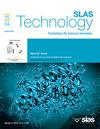CGF血药浓度因子在拔除上腭中高位多余牙中的临床效果。
IF 3.7
4区 医学
Q3 BIOCHEMICAL RESEARCH METHODS
引用次数: 0
摘要
目的:比较分析患者自体血提取CGF(浓缩生长因子)血浓度因子填充上颌腭III型高埋多生牙拔牙创面的术后临床效果。方法:选择2022年9月至2024年9月在邯郸市口腔医院口腔科就诊的上颌腭骨埋多生牙患者108例(共173颗)作为研究对象。术前进行曲面断层扫描和锥形束ct诊断。通过对样本人群的分析进行临床分类,将符合纳入标准的60例患者(共94颗多生牙)随机分为两组,在全身麻醉下行微创手术切除多生牙。实验组采用自体血通过血液离心机提取CGF血浓度因子,填充提取孔创面,对照组不使用。观察两组患者术后感染、疼痛程度、肿胀程度、拆线后创面愈合情况,比较术后CBCT与随访3个月后牙槽骨恢复情况及骨密度变化。结果:感染情况:拔除上颌腭侧III型高埋多生牙后,实验组与对照组术后无感染病例,差异无统计学意义(P < 0.05)。术后疼痛程度:拔除上颌腭侧III型埋多生牙后,对照组术后第1、2、3天疼痛程度均高于实验组(P0.05)。术后肿胀程度:术后第1、2、3天,对照组大鼠肿胀程度显著高于实验组(P < 0.05)。创面愈合:术后第7天拆线时,实验组创面均达到II-A级愈合;对照组2例为II-B型,其余为II-A型。实验组愈合情况较好,但差异无统计学意义(P < 0.05)。上颌牙槽骨恢复及骨密度变化值:术后即刻CBCT显示两组骨密度无显著差异。但术后3个月随访时,实验组骨密度明显优于对照组(P < 0.05)。结论:微创拔除上颚III型高埋多生牙后,CGF实验组与对照组创面无感染,差异无统计学意义。在拔除上颌腭侧III型高埋多生牙后,CGF实验组术后疼痛、肿胀、创面愈合程度均优于对照组。拔除上颌腭侧III型高埋多生牙后CBCT检查结果显示,两组骨密度差异无统计学意义。但术后3个月随访CBCT检查时,CGF实验组骨恢复及骨密度均优于对照组。本文章由计算机程序翻译,如有差异,请以英文原文为准。
Clinical effect of CGF blood concentration factor in extracting supernumerary teeth in the middle and high positions of the upper palate
Objective
this article aims to compare the postoperative clinical effects and analysis of using patient’s autologous blood extracted CGF (concentrated growth factors) blood concentration factor to fill the extraction wound of supernumerary teeth (ST) in patients with maxillary palatal type III high buried supernumerary teeth.
Methods
108 patients (a total of 173 supernumerary teeth) with maxillary palatal bone buried supernumerary teeth who visited the Department of Stomatology at Handan Stomatological Hospital from September 2022 to September 2024 were selected as the study subjects. Preoperative images were taken for curved surface tomography and CBCT (Cone Beam Computed Tomography) diagnosis. By analyzing the sample population for clinical classification, 60 patients (a total of 94 supernumerary teeth) who met the inclusion criteria were randomly divided into two groups and underwent minimally invasive surgery under general anesthesia to remove supernumerary teeth. The experimental group used autologous blood to extract CGF blood concentration factor through a blood centrifuge to fill the extraction socket wound, while the control group did not use it. The postoperative infection, pain level, swelling degree, wound healing after suture removal were observed in both groups of patients, as well as the comparison of alveolar bone recovery and bone density changes between CBCT taken after surgery and follow-up 3 months later.
Results
infection situation: after the extraction of type III high buried supernumerary teeth on the maxillary palatal side, there were no cases of infection in the experimental group and the control group after surgery, and there was no statistically significant difference (P > 0.05). Postoperative pain level: after the extraction of type III buried supernumerary teeth on the maxillary palatal side, the pain level in the control group was higher than that in the experimental group on days 1, 2, and 3 after surgery (P < 0.05), while there was no statistically significant difference in pain level between the two groups on days 5 and 7 after surgery (P > 0.05). Degree of postoperative swelling: on postoperative days 1, 2 and 3, the degree of swelling in the control group was significantly higher than that of the experimental group (P < 0.05), but on postoperative days 5 and 7, the degree of swelling in the two groups was comparable, with no significant difference (P > 0.05). Wound healing: when the stitches were removed on the 7th postoperative day, all the wounds in the experimental group reached II-A healing; 2 cases in the control group were II-B, and the rest were II-A. The healing situation of the experimental group was better, but the statistical difference was not significant (P > 0.05). Maxillary alveolar bone recovery and bone density change value: immediate postoperative CBCT showed no significant difference in bone density between the two groups. However, at the 3-month postoperative follow-up, the bone density of the experimental group was significantly better than that of the control group (P < 0.05).
Conclusions
after minimally invasive extraction of type III high buried supernumerary teeth on the maxillary palate, the wounds of the CGF experimental group and the control group were not infected, and there was no significant difference. After the extraction of type III high buried supernumerary teeth on the maxillary palatal side, the CGF experimental group showed better postoperative pain, swelling, and wound healing levels than the control group. The results of CBCT examination after the extraction of type III high buried supernumerary teeth on the maxillary palatal side showed no significant difference in bone density between the two groups. However, during the follow-up CBCT examination at 3 months after surgery, the bone recovery and bone density of the CGF experimental group were better than those of the control group.
求助全文
通过发布文献求助,成功后即可免费获取论文全文。
去求助
来源期刊

SLAS Technology
Computer Science-Computer Science Applications
CiteScore
6.30
自引率
7.40%
发文量
47
审稿时长
106 days
期刊介绍:
SLAS Technology emphasizes scientific and technical advances that enable and improve life sciences research and development; drug-delivery; diagnostics; biomedical and molecular imaging; and personalized and precision medicine. This includes high-throughput and other laboratory automation technologies; micro/nanotechnologies; analytical, separation and quantitative techniques; synthetic chemistry and biology; informatics (data analysis, statistics, bio, genomic and chemoinformatics); and more.
 求助内容:
求助内容: 应助结果提醒方式:
应助结果提醒方式:


